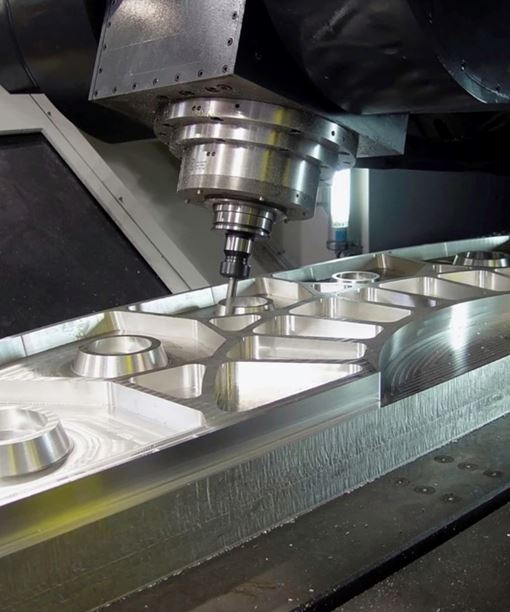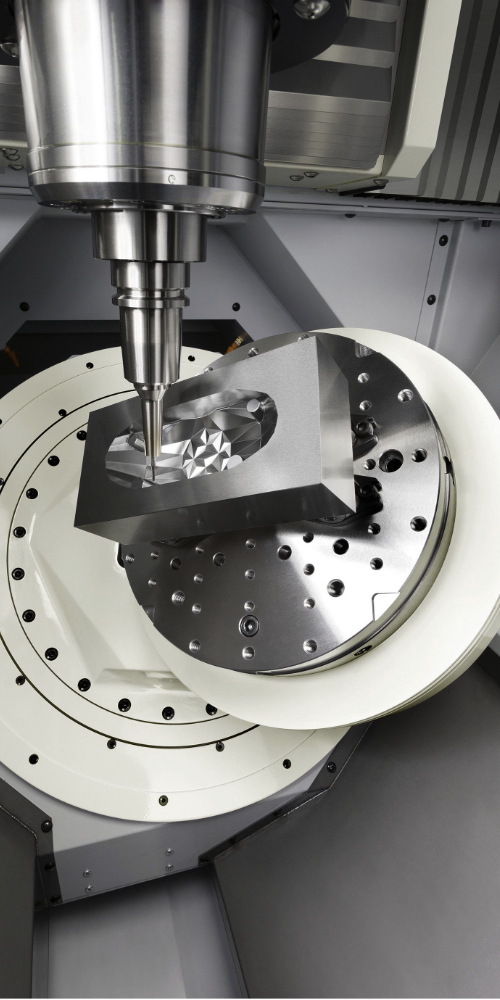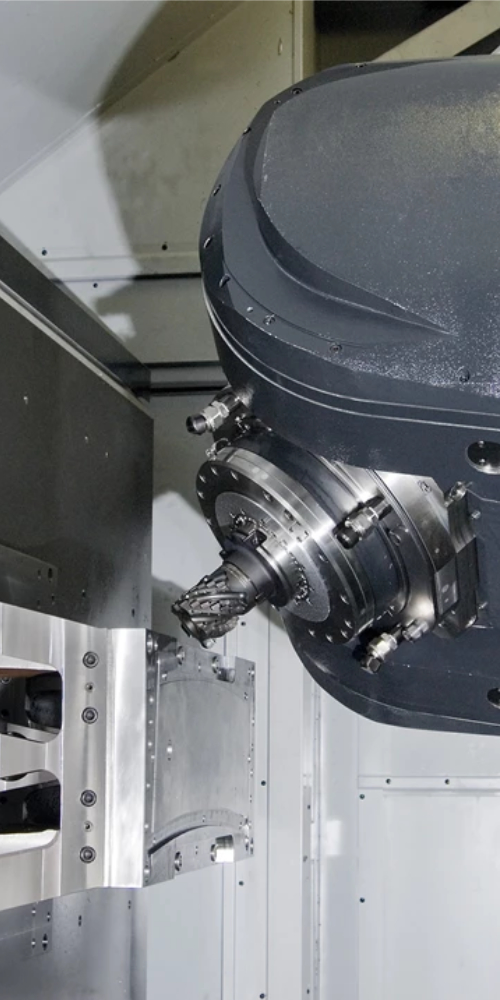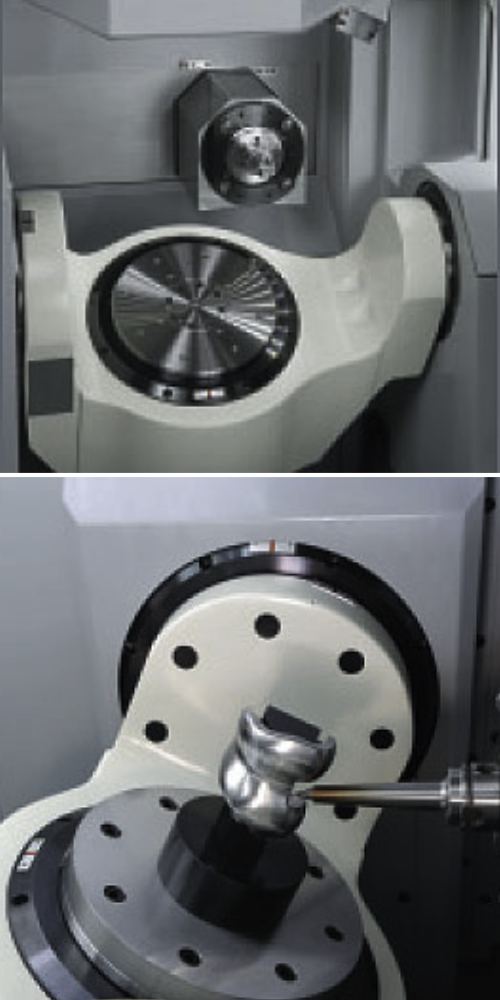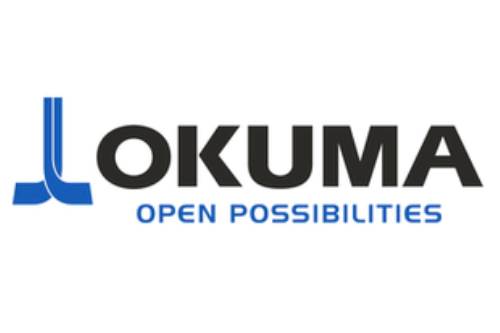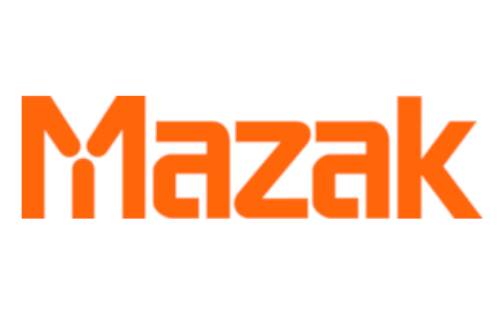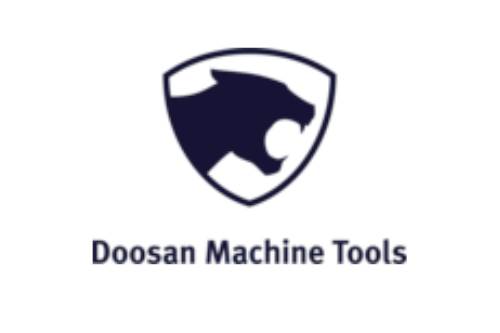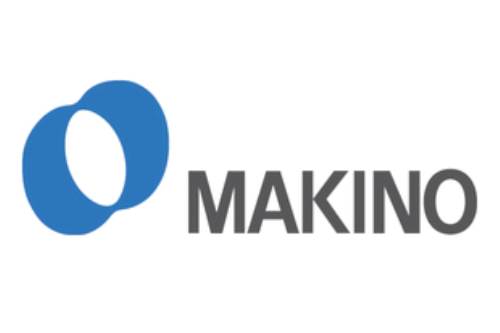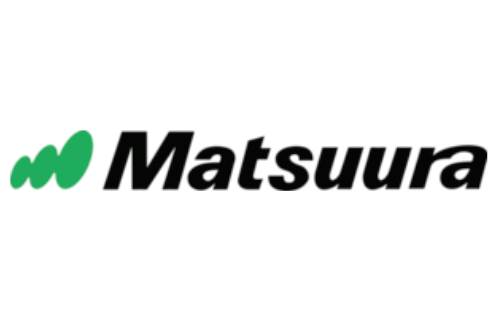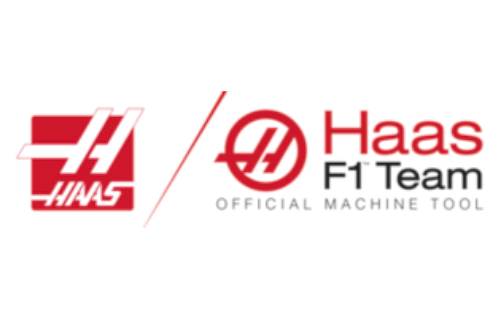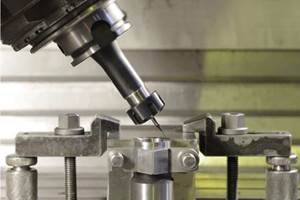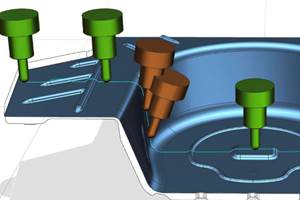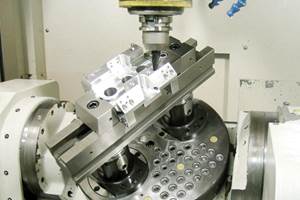3+2 or Full Five-Axis?
The simplest and least expensive way to get at five sides of a part is with a 3+2 machine configuration. For small to medium machines, that typically means a three-axis machining center with a tilting rotary table to position the part. This of course can be accomplished with an auxiliary two-axis table on a standard three-axis machining center. But a machine with an integrated tilt table likely will offer better machining performance and is easier to set up and program. Larger 3+2 machines have a spindle head that tilts and rotates for the additional two axes.
With a 3+2 machining center, the fourth and fifth axes are locked down while the part is machined. Still, almost any plane of the workpiece can be presented to the spindle, and surprisingly complicated parts can be cut efficiently.
The next step up is adding full simultaneous contouring control to an otherwise similar machine configuration. The primary advantages of full five-axis control are that you can now dynamically tilt the tool into the cut, away from interference zones, or keep the tool vector constant as it feeds across sloped or free flowing surfaces. These are the reasons why five-axis machining is so widely used for aerospace components, orthopedics and increasingly in die mold machining.
For several other kinds of parts, five axis control facilitates more efficient use of cutting tools. Tilting the cutter relative to the workpiece surface enables better utilization of the milling flutes, often cut with the side rather than the end of a cutter.
The ability to access more features of a part is simply more pronounced with full five-axis control, as the tool can dynamically tilt away from interference zones on the part. Full five-axis control provides the opportunity to detail hard-to-reach features—such as the corners of pockets or bosses—and create smoother surfaces in the process. This capability can eliminate the need for secondary processes, such as sinker EDM in die and mold work.
